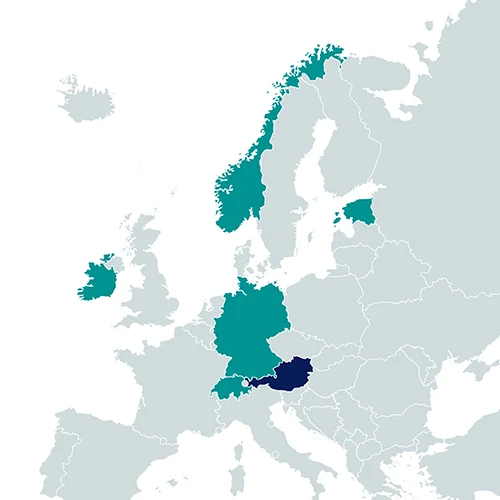2023-04-01 to 2026-03-31
Approx. 1,6 mil. EUR
Martin Schönhart
-
Department of Economics and Social Sciences – Institute of Sustainable Economic Development, University of Natural Resources and Life Sciences, Vienna, Austria
-
Department of Botany and Biodiversity Research – Biodiversity Dynamics and Conservation, University Vienna, Vienna, Austria
-
Farm economics and ecosystem services (Working groups “Farm economics and ecosystem services” and “Provisioning of Biodiversity”), Leibniz Centre for Agricultural Landscape Research e. V., Müncheberg, Germany
-
Institute of Agricultural and Environmental Sciences, Estonian University of Life Sciences, Tartu, Estonia
-
Applied Ecology Unit – School of Natural Sciences, University of Galway, Galway, Ireland
-
Norwegian Institute for Nature Research, Oslo, Norway
-
Research Department, Ruralis Institute for Rural and Regional Research, Oslo, Norway
-
Agriculture and Biodiversity Group, Federal Office of Agriculture – Agroscope, Affoltern, Switzerland
-
Department of Agricultural Economics and Policy, Swiss Federal Institute of Technology in Zurich, Zurich, Switzerland

Permanent grasslands in Europe are the result of human-environment interactions and make a considerable contribution to the biodiversity and ecosystem services (ES) of agricultural landscapes. However, they are threatened by abandonment, soil sealing, conversion to arable land, and intensification. Key to successful conservation are holistic strategies that consider the landscape level for planning, integrate local knowledge, and align conservation objectives with sustainable agricultural production practices. Spatial planning for resilient landscapes requires well developed social networks of interaction, incentives and governance strategies to foster collaboration among farmers and coordination of conservation activities at the landscape scale.
GreeNet’s major objective is to propose transition pathways for sustainable management of European grasslands under a combined land sparing and land sharing paradigm, i.e. the conservation on unmanaged (spared) patches along conservation efforts on agriculturally managed (shared) land within the same landscape. Further objectives are: i) to analyse biodiversity and ecosystem services of grassland habitats and conservation management options, ii) to support conservation planning and the design of efficient conservation incentive schemes, and iii) to reveal the potentials and challenges of farm cooperation for coordinated landscape management and related incentive schemes.
-
Scientific approaches.
GreeNet conducts case studies in Austria, Estonia, Germany, Ireland, Norway, and Switzerland considering a gradient of protection status from currently unprotected but highly valuable landscapes, to Natura 2000 areas, biosphere reserves, nature parks, and national parks. Research activities include: i) the design of integrated conservation management options ii) the evaluation of landscape multifunctionality across intensity gradients, iii) the empirical assessment and modelling of attitudes, preferences, and constraints of farmers, iv) the analysis of cost-effectiveness of conservation incentive schemes, and v) the analysis of governance strategies towards long-term protection of grassland landscapes.
-
Activities for dissemination etc..
GreeNet will engage with stakeholders at international, national, regional and farm level, including agri-environmental and nature protection policy planners, citizens, farm advisers, NGOs, administration and policy makers. A major output is a tool (and concept) box dedicated to stakeholder interactions.
-
Expected societal and/or policy impact
The social-ecological perspective facilitates the identification of barriers and enabling factors for landscape protection to be effective and acceptable to farmers, conservationists, and the public. GreeNet addresses local landscape scale challenges, national biodiversity strategies, pan-European policy goals, and the global Sustainable Development Goals, to support regional and national integrated protected area management. The synthesis of case study processes and results will verify tools and concepts for application throughout European grasslands.